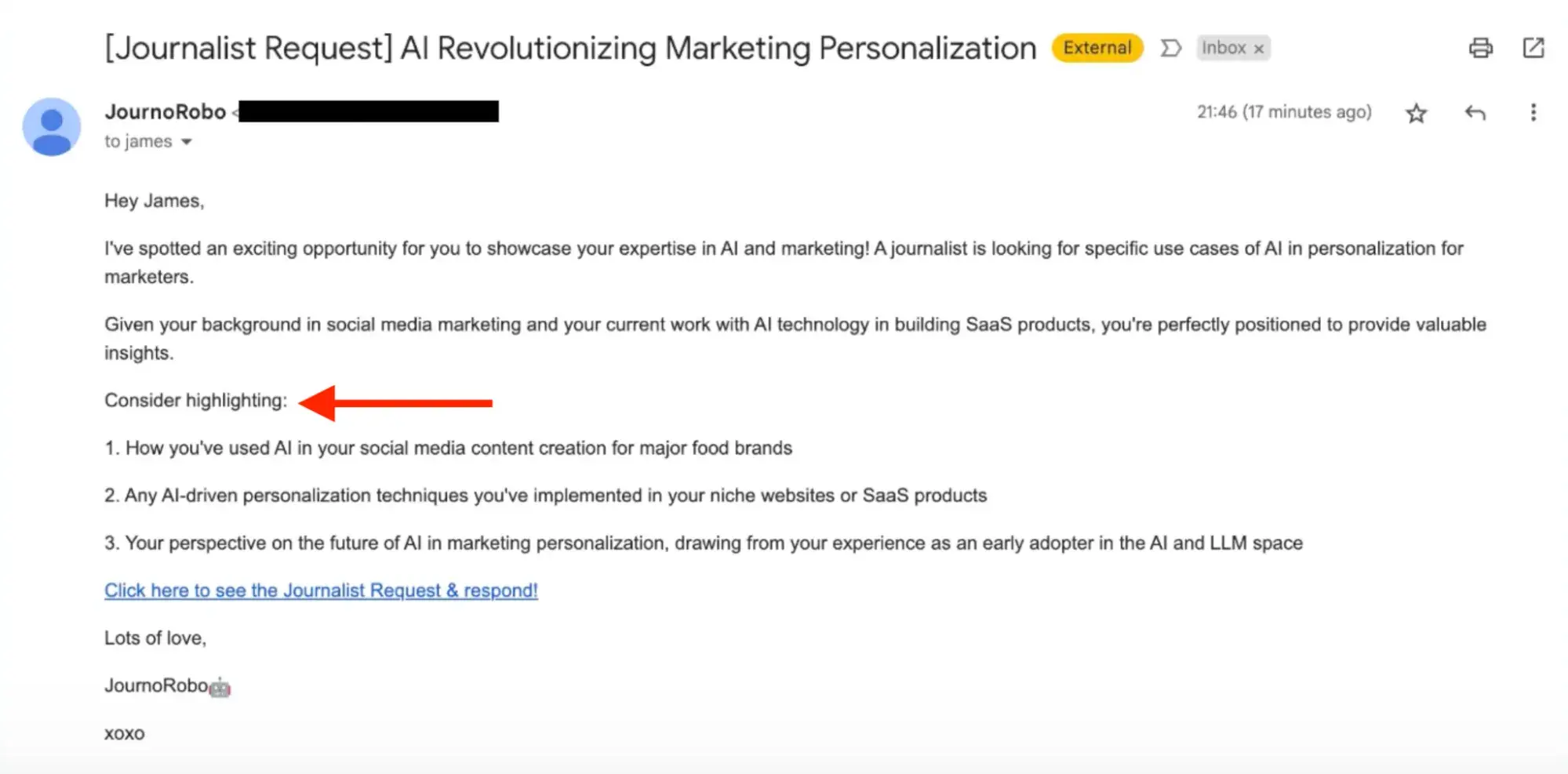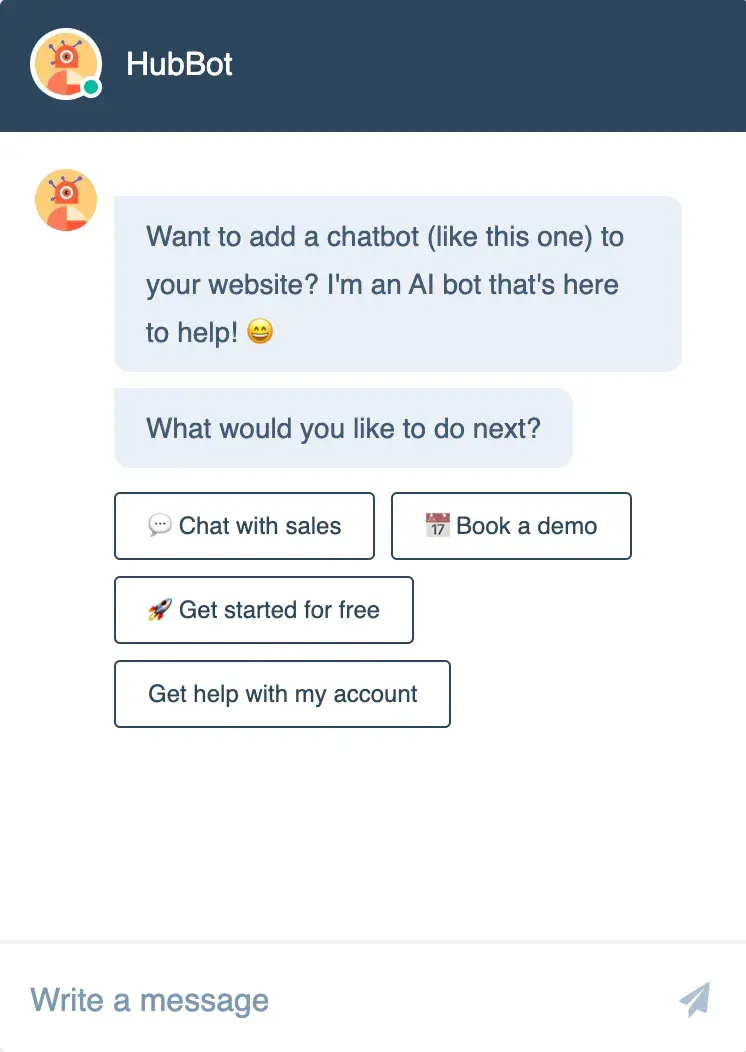Our view at Stack - Simplify growth with an all-in-one platform. Powerful marketing, sales, and support automation. Integrated CMS. Scalable software. Crafted for customer experience.
It’s no secret that AI is driving marketing industry growth. As a writer in the marketing industry, I’ve seen it myself.
AI can help with everything from brainstorming to content creation. But another marketing task that AI excels at? Personalization.
![Download Now: 100 ChatGPT Prompts for Marketers [Free Guide]](https://no-cache.hubspot.com/cta/default/53/c497a8fe-0f60-4244-9cb1-5bed4d1e5ab6.png)
I’ve received plenty of personalized marketing assets, and it’s obvious when something uses surface-level personalization and when something is tailored to my specific interests and behaviors — and the latter always grabs my attention.
If you’re interested in using AI personalization in marketing to reach your customers, I put together this guide to help.
Table of Contents
- Why use AI for marketing personalization?
- Benefits of AI Personalization Marketing
- Challenges of AI Personalization Marketing
- Top 5 Use Cases for AI Personalization Marketing
Why use AI for marketing personalization?
In my experience, the biggest reason to use AI to personalize your marketing is that it enables you to scale your personalization efforts.
Marketers are no strangers to using marketing automation tools to personalize emails, generate leads, or set up workflows. Automation tools are great for streamlining recurring marketing tasks.
The difference with using AI for marketing personalization, however, is that AI is dynamic. AI can gather and interpret data, identify opportunities, and adapt to the data being presented.
This means that rather than being a tool to help streamline personalizations, AI can help you personalize your marketing on a deeper level.
Not only does personalization help increase sales, but 96% of marketers also say that a personalized experience increases the chances of buyers becoming repeat customers.
Benefits of AI Personalization Marketing
If you’re like most marketers I know, you already have reliable marketing automations set up. But if you’re curious about taking your automations up a notch, consider adding AI personalization into the mix.
According to marketers I spoke with, here are just a few of the benefits.
Personalization at Scale
According to HubSpot’s 2024 State of Marketing Report, 77% of marketers who use generative AI say it helps them create more personalized content. On top of that, 56% of those same marketers say their AI-generated content performs the same or better than their fully human-created content.
This demonstrates that AI isn’t a replacement for your current personalization efforts but rather a tool to help you scale them. When you provide the right prompts and have a clear vision of what kind of data you’re looking for, AI can help you reach more customers in a personalized way.
As James Brooks, marketer and founder of Journorobo, puts it: “AI gives us the opportunity to scale the unscalable.”
Brooks adds: “The key is using this creatively, thoughtfully, and putting the effort in upfront. If you put the effort in on the front end and create a great, thorough prompt, it will serve you for months or years to come, every day, on autopilot.”
Lauren Petrullo, CEO and founder of award-winning digital marketing agency Mongoose Media, adds to this sentiment: “The personalization that you can leverage with AI allows the consumer or the subscriber to feel like you’re talking to them one-on-one versus one-to-many,” she says.
Improved Marketing Automations
As I mentioned earlier, every marketer uses marketing automations to streamline their tasks. AI tools can improve your current automations by making them more intelligent and data-driven.
For example, say I have an automation that segments my target audience. AI can take that a step further by identifying patterns and predicting the behaviors of that audience.
This can help me make more informed marketing and business decisions.
Greater Customer Value
Finally, with greater personalization comes greater customer value.
The more details you have about your target audience, the more tailored your marketing will be. This results in them receiving more value than they would have through generic marketing tactics.
Challenges of AI Personalization Marketing
AI personalization tools are not without their flaws. Let’s break down a few of the challenges and how marketers can address them.
Crafting Prompts
The most common challenge I hear about when using AI — and have experienced myself — is with prompting.
AI is smart, but it’s still learning. In fact, most tools need time and a lot of practice (i.e., receiving prompts) to adjust to your voice, tone, and requests.
This can be a challenge when using AI for personalization. Brooks suggests being as specific as possible to generate better prompts:
“Look at a language learning model (LLM) as a person — a VERY intelligent and knowledgable person, but still a person,” he says.
“It cannot read your mind. Set very specific prompts. Tell the LLM exactly what you want: how you want them to write, what you want the outcome to be, how you want things formatted, what you do want, and what you don’t want.”
Technical Knowledge
Another challenge marketers may run into is having a lack of technical knowledge.
Marketing personalization at scale requires a bit more technical expertise than using ChatGPT, for instance.
You may need to understand APIs and have a deeper grasp of how AI works to create personalization workflows and automatic outputs.
“Fortunately, with the rise in ‘no-code’ tools, it’s never been easier to tap into APIs and automate your marketing,” says Brooks.
“I recommend checking out tools like Make.com and Zapier that natively connect with your favorite marketing tools and AI platforms like OpenAI. A little YouTube-ing can also go a long way to learning this stuff.”
Top 5 Use Cases for AI Personalization Marketing
1. Email Marketing
Sending personalized emails is nothing new. We’ve all been on the receiving end of a marketing email that’s addressed to us, or one reminding us of the item we just viewed while online shopping.
But AI tools can help marketers take it up a notch.
You can use AI to gather customer details such as their birthday, hobbies, professional expertise, and even passions. Then, enter that information into an LLM before sending your marketing emails.
Doing this allows you to send emails that truly speak their language, suggests Brooks.
“You can do this in an automated way using various no-code tools,” he says. “Personally, I use Bento for my emails. “It can make an API call for each email it sends out, meaning that you can send unique emails, per person, even if you are effectively sending a ‘Broadcast’ to thousands of people.”
2. Thought Leadership
Yes, you can use AI to identify thought leadership opportunities.
Let me explain.
As I was researching use cases for this article, I turned to X to ask marketers for examples of how they use AI for personalization.

Image Source
This tweet is how I connected with Brooks, the founder of Journorobo.
He was notified of my tweet through his AI tool, which looks for journalist requests (like the one I shared) and cross-references its user database to send personalized emails to users who match the request.
It even provides recommended talking points based on the users’ bio.

Using AI tools like this one can help marketers discover thought leadership and PR opportunities instantly.
Rather than waiting around for a journalist to reach out and cover your company or interview your marketing leaders, you can be proactive with your thought leadership strategy.
Pro tip: AI can help you jump on an opportunity way before your competition, too. Brooks was one of the first people to respond to my request, and I have no doubt he was able to get ahead because of the personalized AI email he received.
3. Chatbots
AI can also be used to personalize your chatbots.
Whether you have one set up on your website or for Facebook or Instagram, chatbots are essential for personalizing customer interactions.
You can use AI to create a customizable chatbot, like this one from HubSpot, to scale customer support, generate leads, and book more meetings.

An AI chatbot streamlines this process and, thanks to its dynamic memory and adaptability, makes the conversation even more personal.
“AI provides a memory of the conversation that you can incorporate into future messages,” says Petrullo. “You can also have AI read the tonality of someone’s responses, allowing you to respond at the energy level that someone is inputting.”
4. Landing Pages
Another great opportunity to use AI is for programmatic SEO.
Programmatic SEO involves creating landing pages (usually hundreds, sometimes thousands) to automatically target keywords. This process is done in bulk, which means it can take hundreds of hours if you were to do it manually.
AI can help you do this at scale. You can use AI to create hundreds of programmatic landing pages that meet search terms based on industry or location.
Upwork is a great example of this. You can search for any type of freelance service in any city, and Upwork will have a landing page. For example, I searched for “freelance graphic designers Austin,” and this is what showed up.

Image Source
I then searched for “freelance copywriter los angeles,” on Google and an identical landing page from Upwork showed up in the results.
“I‘ve got websites with broad audiences with many different niche interests,” says Brooks. “I’ve used AI to build thousands of landing pages that speak very directly to those niche audiences, making relevant cultural references and using the colloquial language of those niches (even if I know nothing about them!).”
5. Localization and Translation
If you’re expanding into international markets, you can use AI to localize your content by translating it into different languages for your various target markets.
This can be done for programmatic landing pages, as mentioned above. You can also localize ads, product marketing assets, and SEO content.
You don’t necessarily need to be expanding to different countries to take advantage of localization. If your audience is global and you want to personalize the ads or landing pages to their language, AI can automatically translate for you.
It can take years for someone on your team to learn a new language to the point where they can translate marketing content. Even if you have translators on your team, it’s difficult to scale personalized content when you’re manually translating.
“While AI is not equipped to do full empathy mapping and empathy matching, it does have a strong command of language,” says Petrullo. “You can use it as an intersection of common language at scale.”
Scale Your Marketing Personalization With AI
After speaking with marketers and researching different use cases for AI for marketing personalization, my biggest takeaway is that it’s essential if you want to scale.
Personalizing your marketing efforts goes beyond addressing your audience by name in emails. Marketing personalization is about getting to know your customers on a deeper level.
It’s about understanding their interests, behaviors, and how they speak so you can market your products or services in a way that resonates with them more.
Using AI personalization in your marketing means being more data-driven. AI tools will help you identify marketing opportunities, predict customer behaviors, localize your content, and tailor your messaging.
And if you want to do this at scale, employing AI is a must.
![]()
If Hubspot is of interest and you'd like more information, please do make contact or take a look in more detail here.
Credit: Original article published here.
